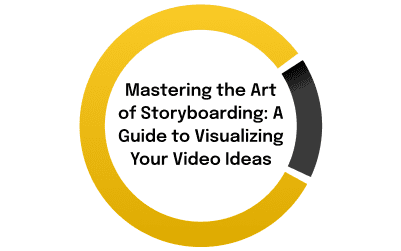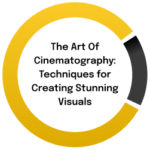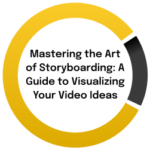The Art of Storyboarding: A Guide to Visualizing Your Video Ideas
When it comes to bringing your video ideas to life, there’s a powerful tool that can help you visualize and organize your vision: Storyboarding. Storyboarding is an essential step in the video production process that allows you to plan and communicate your ideas effectively. In this guide, we’ll explore the important aspects of storyboarding and provide you with practical tips to master this art.
What is Storyboarding?
Storyboarding is the process of illustrating a sequence of shots that represent key moments in your video. It acts as a blueprint, allowing you to visualize how the video will flow, shot by shot. Each storyboard frame consists of a sketch or image accompanied by brief descriptions of the actions, camera angles, and dialogue.
Why is Storyboarding Important?
Storyboarding offers numerous benefits throughout the video production process. Here’s why mastering this art is crucial:
1. Visualizing Your Ideas: Storyboarding helps you translate your thoughts and ideas into a visual format. By sketching out your shots, you can see how the scenes will unfold and make necessary adjustments before production begins.
2. Enhancing Communication: Storyboards serve as a common visual language for your entire team. By sharing your storyboard, everyone involved in the production process, from the director to the cinematographer and editor, can understand your creative vision more easily.
3. Saving Time and Resources: Storyboarding allows you to plan your shots in advance, helping you identify potential issues and make necessary adjustments before shooting. This saves time and minimizes the risk of costly mistakes during production.
4. Improving Collaboration: Storyboarding encourages collaboration and feedback. By sharing your storyboard with your team, you can gather valuable insights and suggestions to refine your ideas further.
Tips for Mastering Storyboarding
1. Keep it Simple: Focus on conveying the key actions and composition in each frame. Use basic shapes and stick figures to represent characters and props. Remember, the purpose of storyboarding is to communicate the essence of the scene, not create intricate artwork.
2. Sequence and Flow: Pay attention to the sequence of shots and how they connect. Ensure a logical flow between frames, allowing the story to unfold naturally. Consider the transitions, camera movements, and pacing to create a cohesive narrative.
3. Capture Emotions and Mood: Use visuals, such as facial expressions, body language, and lighting, to evoke the desired emotions and set the mood of each scene. Experiment with different camera angles and compositions to enhance the impact of your storytelling.
4. Add Annotations: Accompany each frame with brief descriptions or notes that explain the actions, dialogue, and camera movements. This helps your team understand the intended shot and ensures a smooth production process.
5. Iterate and Refine: Storyboarding is an iterative process. Don’t be afraid to make changes and refine your frames as you progress. Seek feedback from your team and be open to suggestions that can improve the overall quality of your video.
6. Use Digital Tools: Leverage digital storyboarding tools and software to streamline your process. These tools offer pre-made assets, easy editing capabilities, and the ability to add audio and motion, making it easier to bring your ideas to life.
7. Consider Timing and Pacing: Use arrows or additional notes to indicate the timing and duration of each shot. This helps you plan the rhythm and pacing of your video, ensuring a seamless and engaging viewing experience.
8. Test with Animatics: Animatics are rough, animated versions of your storyboard frames. Creating animatics can give you a better sense of how your shots will flow together and allow you to experiment with timing and transitions.
In conclusion, mastering the art of storyboarding is essential for effective video production. It helps you visualize your ideas, communicate your vision to your team, save time and resources, and improve collaboration. By following these tips and practicing regularly, you can enhance your storytelling abilities and create impactful videos that captivate your audience. So, pick up your pencil, sketch your frames, and let your ideas come to life through the power of storyboarding.



